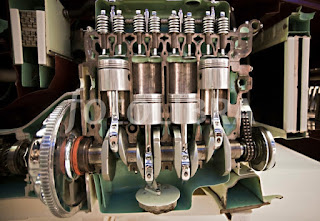The proposed mini-electricity generator project is very simple to build and can be used by students as a school project, or just for hobbyists. The set up can be used to charge a battery with electricity produced from wind power.A dynamo is a type of alternator commonly associated with bicycles for generating electricity that is used for lighting a small head lamp. The unit eliminates the need of a battery and provides an easy alternative for illuminating a lamp whenever the bicycle is in motion.
A dynamo is a type of alternator commonly associated with bicycles for generating electricity that is used for lighting a small head lamp. The unit eliminates the need of a battery and provides an easy alternative for illuminating a lamp whenever the bicycle is in motion.
A dynamo is a type of alternator commonly associated with bicycles for generating electricity that is used for lighting a small head lamp. The unit eliminates the need of a battery and provides an easy alternative for illuminating a lamp whenever the bicycle is in motion.
A dynamo is a pretty interesting little generator which starts generating pure electricity the moment its wheel is rotated. Basically, it works on the fundamental principles of electromagnetism where current is induced in coils of copper wire under the influence of a rotating magnetic flux, generated by alternate shifting of the magnets North and south poles.
Before we move on to the actual project, interested enthusiasts may try building a homemade dynamo with the help of the explanation provided in the following section.
Before we move on to the actual project, interested enthusiasts may try building a homemade dynamo with the help of the explanation provided in the following section.
How to Make a Homemade Dynamo
You will need the following materials:- A flat iron bar = six inches long, half mm in thickness,
- Super enamelled copper wire = 28 to 30 SWG, 25 meters approximately,
- Small magnet bar = square in shape, 1.5 square inch, half mm in thickness.
- Suitable spindle, clamp, wheel mechanism set-up as discussed in the text and in the diagram.
- Torch Bulb = 3 Volts
Bend the iron bar in “U” shape with dimensions as shown in the diagram.
Cover the horizontal portion of the “U” with a reasonably thick paper former or insulate it with some kind of PVC tape.
Cover the horizontal portion of the “U” with a reasonably thick paper former or insulate it with some kind of PVC tape.
Wind the copper wire neatly and gently over the above-dressed section of the “U” channel, through uniform overlapping steps, until you have at least 6 inches of wire ends left for external connections.
Take the magnet and fix it (by glueing or some other suitable method) over a central metal rod and arrange the mechanism just as directed in the diagram.
Connect the coil ends to a small 3-volt torch bulb.
Now it’s just a matter of rotating the central rod/magnet assembly as fast as the mechanism permits.
Now it’s just a matter of rotating the central rod/magnet assembly as fast as the mechanism permits.
If the winding and the mechanism specifications are perfectly optimised, it will instantly produce a nice glow over the filament of the bulb.
Your homemade DIY dynamo is ready.
However, the above make cannot be even close to a readymade dynamo as far as efficiency is concerned, so for our next main project, we would want to procure a good quality readymade bicycle dynamo.



